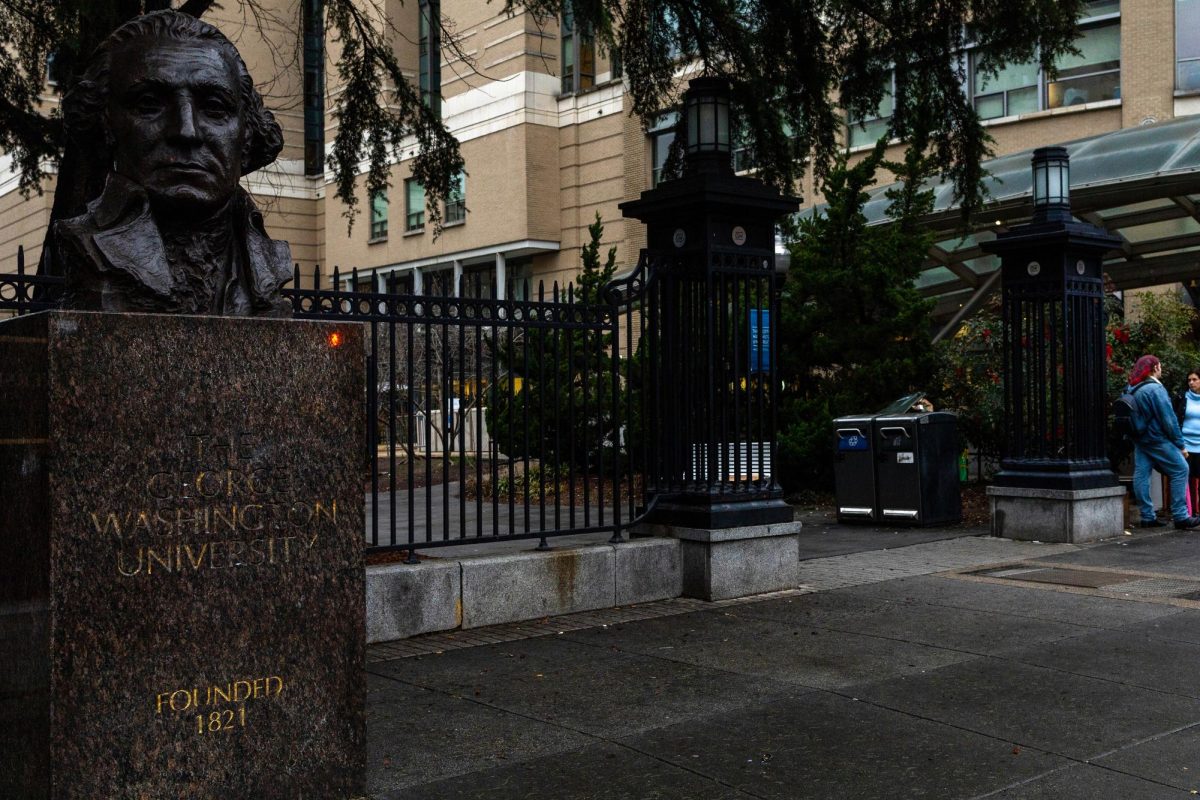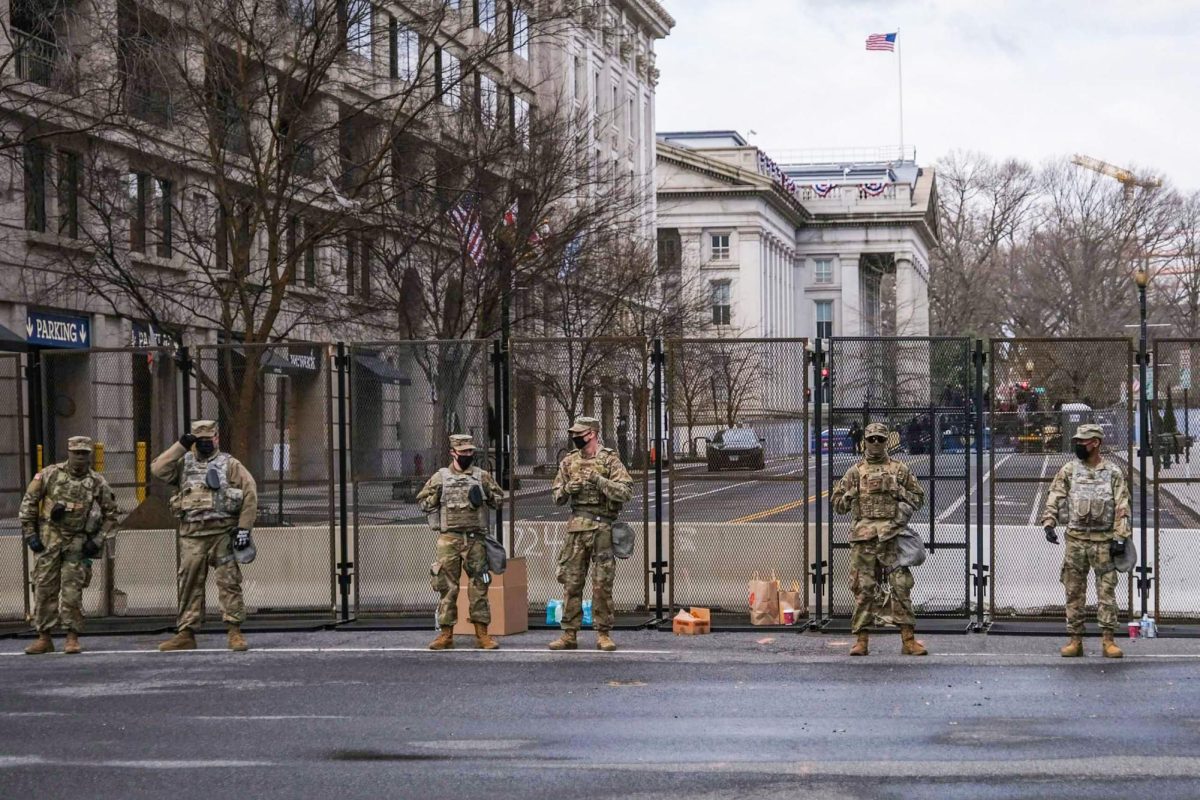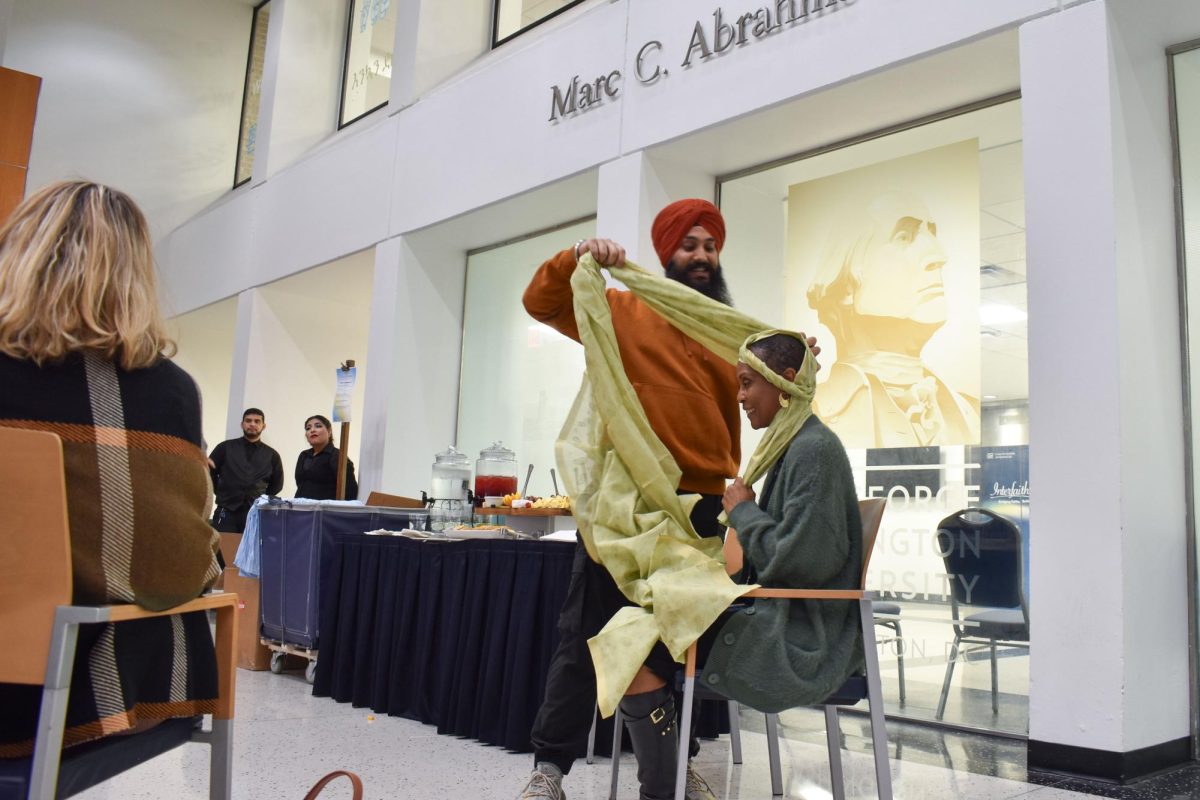Officials are expected to renovate the area of I Street between 23rd and 24th streets this summer pending the status of funding requests and permit applications.
University officials plan to conduct “major” landscaping, add lighting and reconfigure seating on I Street Mall, the pedestrian space above the Foggy Bottom-GWU Metro station and beside GW Hospital, to address community concerns about public health and safety, according to the project’s website. University spokesperson Julia Metjian said construction will not occur until the summer, assuming funding is approved by the Board of Trustees.
Metjian said officials are proposing the renovation for fiscal year 2025 and that funding and permits have not yet been approved. Officials do not have an update on the cost of the renovation because it is still under review and consideration, she said.
She added that officials will remove rat burrowing areas, install anti-rat trash cans and recycling bins, add lighting and increase sightlines across I Street Mall to address rodent and safety concerns. The renovation will also include the addition of tables and chairs with umbrellas for shade.
Officials in September purchased 90 trash cans and 90 recycling bins that enclose waste and prevent rodent contamination, which officials say they will use to replace “nearly all” current outdoor trash cans and recycling bins.
“Assuming funding is approved, and once permits are obtained, work is expected to begin in summer 2024,” Metjian said in an email.
Officials faced pressure to add more lighting in I Street Mall to make it more secure after a 21-year-old student reported that three men attacked and sexually assaulted her in an alleyway in 2015. The Metropolitan Police Department reported 17 instances of theft in the area last year, according to its database.
Metjian said during certain phases of the renovation, there may be “limited” impacts to the operation of FRESHFARM, a Foggy Bottom farmers market of more than a dozen vendors in the I Street Mall every Wednesday. She said officials shared the plan with FRESHFARM and that the market is supportive of the additional open space and seating that will come out of the renovation.
“They raised questions about coordinating construction activities with the ongoing market schedule and we have confirmed we will coordinate to minimize impacts,” Metjian said.
Officials permanently closed I Street between 23rd and 24th streets to vehicle traffic in 1980 to create the pedestrian space, a project that cost about $200,000. The street closure was a part of the University’s 1970 campus plan. Officials updated I Street Mall in 2005 to install new fencing and gardens in the space.
John George, the president of the Foggy Bottom Association, said the University organized a meeting with eight to 10 community representatives in October or November, including George, Foggy Bottom and West End Advisory Neighborhood Commission members and other community advocates, in which officials introduced the renovation plan and asked for input.
George said he and other community advocates asked the University to get rid of small hills in the mall where rats burrow and refrain from altering the entrances to I Street Mall. He said they also asked GW to add central, large canopy trees to make the area cooler in the summer and rain catch basins to collect rainwater and disperse it “naturally.”
“I’m very grateful for the University being transparent on this particular initiative,” George said.
But George said when GW presented their tentative rendering for the I Street Mall renovation in GW’s Community Advisory Committee meeting earlier this month, many of their suggestions were not addressed “at all,” including adding rain catch basins and central trees.
“It’s important that if you are convening a group of people, then you actually listen and then act on those or give explanations for why it wasn’t,” George said.
Ed Comer, an ANC commissioner whose district includes the western entrance to I Street Mall, said he was also involved in the meeting with officials in October or November about the I Street Mall renovation plan. He said he suggested there be more visibility of I Street Mall from GW Hospital’s outdoor eating area for increased safety while recognizing the University does not own GW Hospital.
“It would make the mall feel like a livelier place,” Comer said.
Comer said he is concerned that there is little greenery in the rendering of the renovated I Street Mall and hopes officials will be more responsive to community comments about the proposed renovation.
“This is an important part of the landscape,” Comer said. “It connects parts of the neighborhood that are not on campus.”





